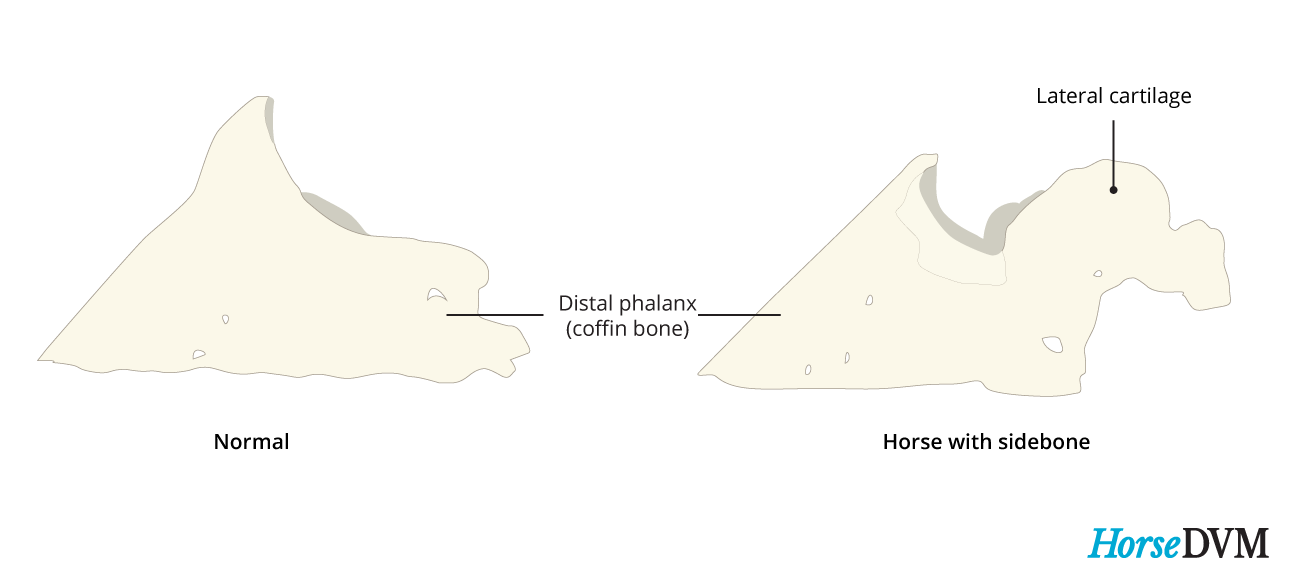Sidebone is the ossification of the collateral cartilages of the foot. The process results in the normally soft cartilages found on the inside and outside aspects of the foot, to harden and become less flexible bone.
The condition occurs most commonly in Heavy draft, Cob, and Icelandic breeds, and horses with poorly balanced feet or uneven loading of the heels. Sidebone usually occurs in the forelimb, cases involving the hindlimb are usually associated with acute trauma or chronic repetitive trauma (such as punctures, chronic bruising from interference, or lacerations), resulting in chronic inflammatory changes and osseous metaplasia of the cartilage.
Diagnosis of Sidebone
The lateral cartilages provide support and protection for the soft tissues at the back of the foot. Ossification typically starts from distal to proximal, and may initially induce lameness in affected horses. The only way to verify the extent of ossification that has occurred is through radiographic images. Nuclear scintigraphic examination may also be helpful to help differentiate between a fractured sidebone and a separate center of ossification.
